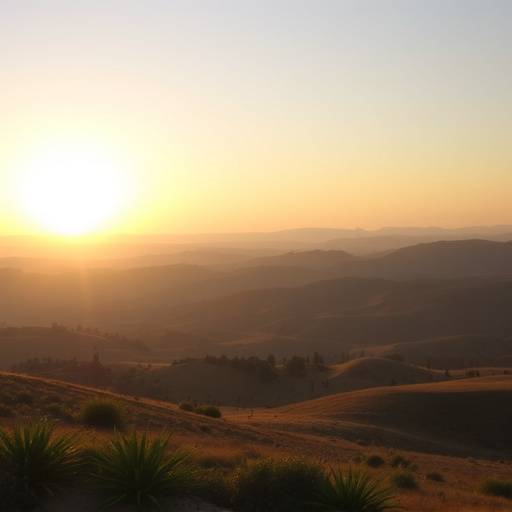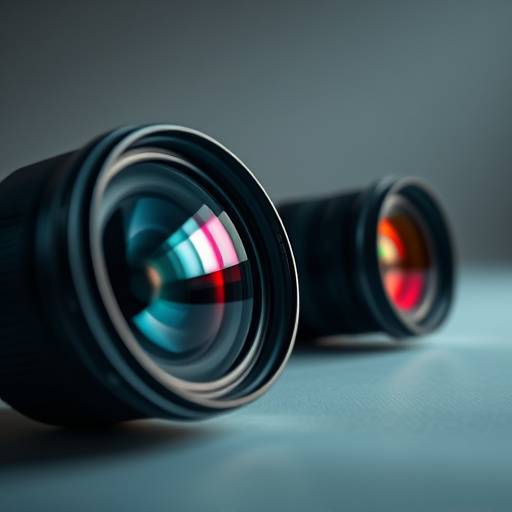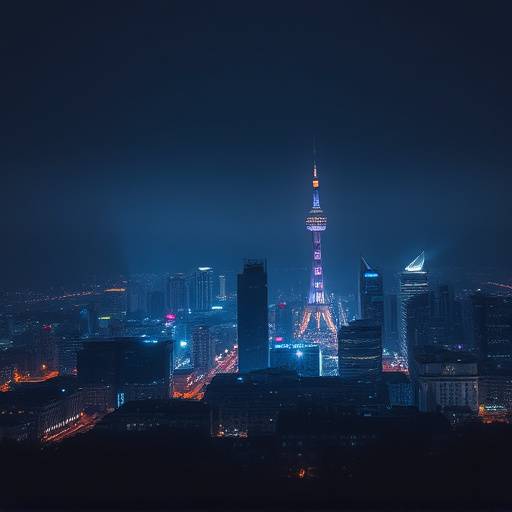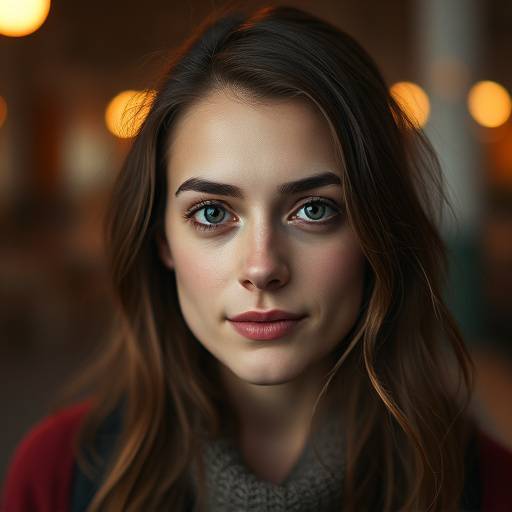Welcome to the Pixel Perfect Pro blog, your go-to source for the latest camera reviews, photography tips, and industry insights. Our team of experienced photographers and tech enthusiasts are dedicated to providing you with valuable information to enhance your photographic journey. Explore our articles below to discover new techniques, learn about the latest gear, and stay up-to-date with the ever-evolving world of photography.

Mastering Composition: Essential Tips for Stunning Photos
Published: October 26, 2024
Composition is the backbone of any great photograph. It’s how you arrange the elements within your frame to create a visually appealing and engaging image. In this article, we delve into the core principles of photographic composition, providing you with practical tips and techniques to elevate your photos from ordinary to extraordinary.
Whether you're shooting landscapes, portraits, or still life, understanding composition is crucial. We’ll cover the rule of thirds, leading lines, symmetry, and other essential elements that will help you guide the viewer's eye and create a sense of balance and harmony in your images. Learn how to use these tools effectively to tell a story and evoke emotion with your photography.
One of the most fundamental techniques is the Rule of Thirds. Imagine dividing your image into nine equal parts by two horizontal and two vertical lines. Placing key elements along these lines or at their intersections can create a more dynamic and visually interesting composition than simply centering the subject. Practice using this technique in various scenarios to see how it improves your photos.
Leading lines are another powerful compositional tool. These lines, whether they are roads, rivers, or even fences, draw the viewer's eye into the scene and create a sense of depth. Look for natural and man-made lines that can be used to lead the viewer to the main subject of your photograph. Experiment with different angles and perspectives to maximize the impact of these lines.
Symmetry and patterns can also create visually striking images. Look for opportunities to capture symmetrical scenes or repeating patterns in nature or architecture. These compositions often have a calming and balanced feel. However, don't be afraid to break the symmetry occasionally to add a touch of visual tension and make your image more unique.
Finally, remember that composition is not just about following rules. It's also about creativity and personal expression. Experiment with different techniques and find what works best for you. Don't be afraid to break the rules occasionally to create something truly unique and captivating. The most important thing is to develop your own personal style and vision.
Read More

Choosing the Right Lens: A Comprehensive Guide for Photographers
Published: October 19, 2024
Selecting the right lens is essential for achieving your desired photographic style and capturing the images you envision. With so many options available, it can be overwhelming to choose the perfect lens for your needs. This guide provides a comprehensive overview of different lens types, their characteristics, and their ideal applications.
From wide-angle lenses to telephoto lenses, each type offers unique capabilities and perspectives. Wide-angle lenses are perfect for capturing expansive landscapes or architectural shots, while telephoto lenses are ideal for wildlife photography and capturing distant subjects. Understanding the strengths and limitations of each lens type is crucial for making informed decisions.
Prime lenses, which have a fixed focal length, are known for their sharpness and fast apertures. They are often preferred by portrait and street photographers who value image quality and shallow depth of field. Zoom lenses, on the other hand, offer versatility and convenience, allowing you to adjust the focal length without changing lenses. They are a great option for travel photography and situations where you need to quickly adapt to different shooting scenarios.
Macro lenses are designed for capturing close-up images of small subjects, such as flowers, insects, and jewelry. They offer high magnification and exceptional detail. Tilt-shift lenses allow you to control the plane of focus and correct perspective distortion, making them popular among architectural and landscape photographers.
In addition to focal length and aperture, other factors to consider when choosing a lens include image stabilization, autofocus performance, and build quality. Image stabilization helps to reduce camera shake, allowing you to shoot at slower shutter speeds. Autofocus performance is crucial for capturing sharp images of moving subjects. A well-built lens will be more durable and resistant to the elements.
Ultimately, the best lens for you will depend on your individual needs and preferences. Consider the types of photography you enjoy, the subjects you like to shoot, and your budget. Do your research, read reviews, and try out different lenses to find the perfect match for your camera and your creative vision.
Read More

Night Photography: Capturing the Magic After Dark
Published: October 12, 2024
Night photography presents unique challenges and opportunities for capturing stunning and ethereal images. From cityscapes illuminated by artificial lights to the star-studded expanse of the night sky, the possibilities are endless. This article provides you with essential tips and techniques for mastering the art of night photography.
One of the most important tools for night photography is a sturdy tripod. Since you'll be using long exposures, a tripod is essential for keeping your camera steady and preventing blurry images. A remote shutter release or timer can also help to minimize camera shake. Experiment with different exposure times to capture the desired amount of light and detail in your images.
Understanding your camera's settings is crucial for night photography. Use a low ISO to minimize noise and a wide aperture to gather as much light as possible. Manual mode allows you to have full control over your camera's settings, giving you the flexibility to adjust the exposure to your liking. Learn to read your camera's histogram to ensure that your images are properly exposed.
When shooting cityscapes at night, look for interesting light sources, such as streetlights, neon signs, and illuminated buildings. Experiment with different angles and perspectives to create dynamic and visually appealing compositions. Use long exposures to capture the movement of traffic and create light trails.
For astrophotography, find a location far away from city lights to minimize light pollution. Use a wide-angle lens and a fast aperture to capture as much of the night sky as possible. Long exposures are necessary to capture the faint light of the stars. Consider using a star tracker to compensate for the Earth's rotation and capture sharper images of the stars.
Finally, be patient and persistent. Night photography can be challenging, but the results are well worth the effort. Experiment with different techniques, learn from your mistakes, and don't be afraid to try new things. With practice and dedication, you can capture stunning and unforgettable images of the night sky.
Read More

Elevate Your Portrait Photography: Techniques for Capturing Personality
Published: October 5, 2024
Portrait photography is more than just taking a picture of someone's face; it's about capturing their essence, their personality, and their story. To take compelling portraits, you need to understand posing, lighting, and how to connect with your subject. This article explores the essential techniques to help you create captivating portrait photography.
Posing is a crucial aspect of portrait photography. Guide your subject into poses that feel natural and comfortable, while also being flattering. Encourage them to relax and be themselves. Pay attention to their body language, their posture, and their facial expressions. Small adjustments in posing can make a big difference in the final image.
Lighting is another key element in portrait photography. Natural light is often the most flattering, but you can also use artificial lights to create different effects. Experiment with different lighting setups to find what works best for your subject and your desired look. Soft, diffused light is generally preferred for portraits, as it minimizes harsh shadows and creates a more pleasing skin tone.
Connecting with your subject is essential for capturing their personality. Take the time to talk to them, get to know them, and make them feel comfortable in front of the camera. The more relaxed and comfortable they are, the more authentic and genuine their expressions will be. Encourage them to be themselves and let their personality shine through.
Backgrounds are also important in portrait photography. Choose a background that complements your subject and doesn't distract from them. Simple, uncluttered backgrounds are often the most effective. You can also use shallow depth of field to blur the background and draw more attention to your subject.
Finally, don't be afraid to experiment and try new things. Portrait photography is an art form, and there are no hard and fast rules. The most important thing is to have fun and let your creativity flow. With practice and dedication, you can create portraits that are both beautiful and meaningful.
Read More



